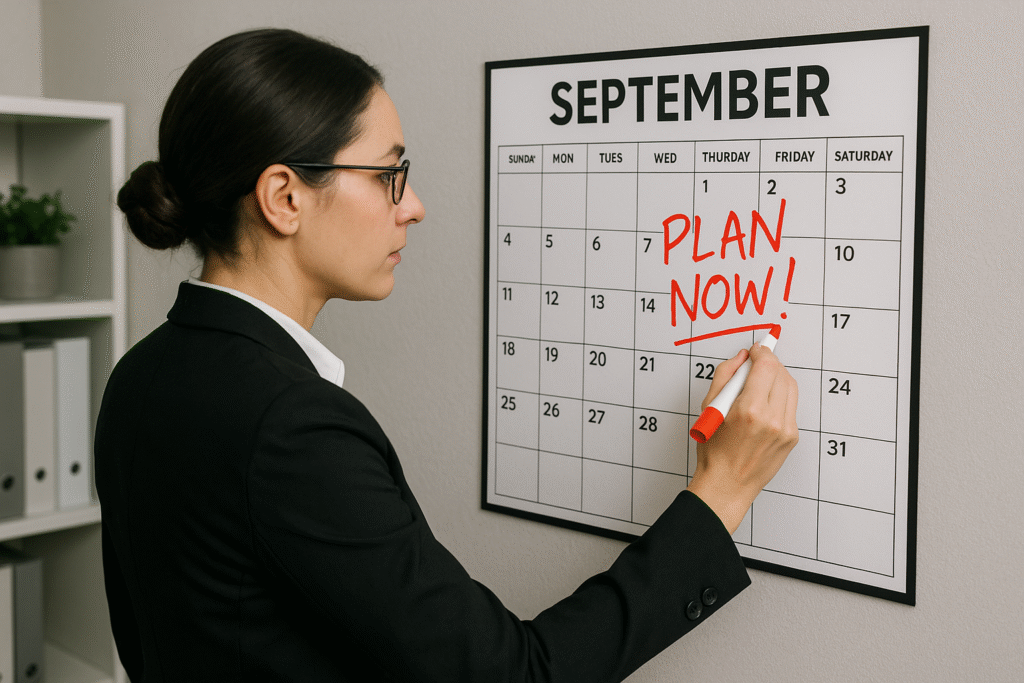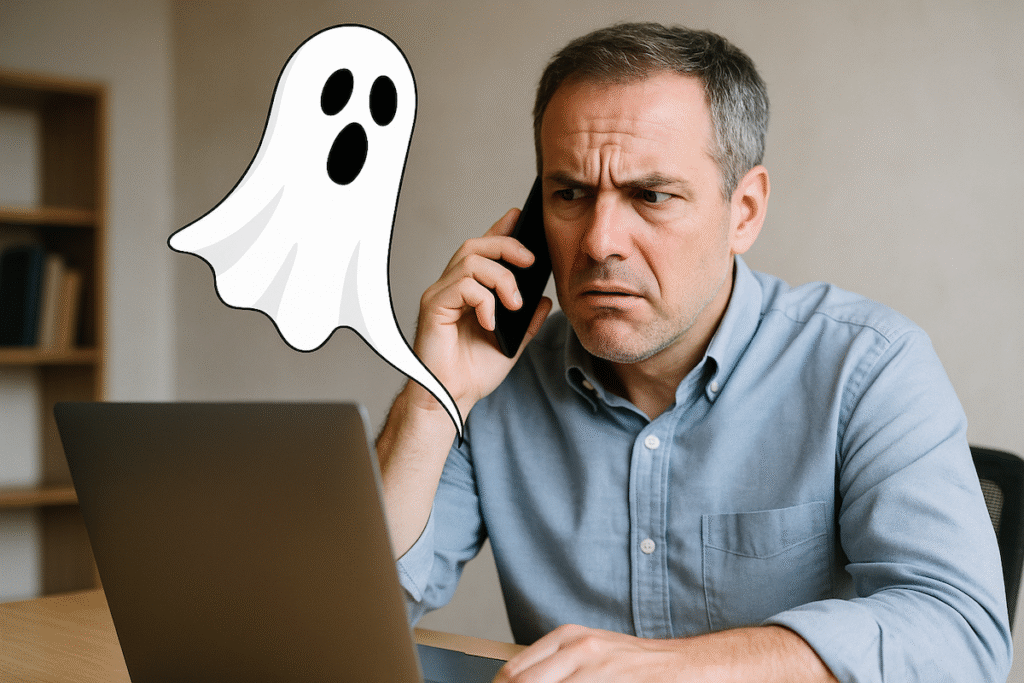Fractional RDSMs: The Smart Way to Scale Senior Living Sales & Marketing Leadership

Operating senior living communities today is an ongoing balancing act: maintaining high occupancy, supporting executive directors and sales teams, and managing marketing initiatives all while staying lean and profitable. For many organizations, hiring a full-time regional sales and marketing leader isn’t financially feasible or operationally necessary. That’s where fractional regional leadership comes in: a modern, […]
Why Senior Living Providers Are Turning to Fractional Regional Directors of Operations

The senior living industry has always demanded strong, hands-on leadership. But as operators face increasing regulatory complexity, multiple acquisitions, turnover, staffing challenges, and pressure to produce a strong NOI, many find themselves stretched thin in the area of regional operations leadership. The traditional staffing model in which each region employs a full-time Regional Director of Operations […]
How a Remote Sales Specialist Supports Your Multifamily Community Leasing Team

Leasing agents and property managers who handle leasing have a full plate of responsibilities, including answering phone and email inquiries, showing apartments, managing the lease application process, managing digital presence (website, social media channels, Google Business Profile, and online ads), and coordinating move-ins. With so many job duties, income-producing activities can be neglected, resulting in […]
Plan Ahead to Cover Year-End Sales Team Vacations

The end of the year is often a race to meet senior living occupancy goals. It’s also the time when sales teams want to spend some much-deserved time off with family and friends. Prospective residents and their families don’t stop searching for senior living in November and December. In fact, the end of the year […]
Meeting the Communication Needs of Today’s Senior Living Prospects

The way we connect with senior living prospects and their families has transformed dramatically over the last decade. While we once relied heavily on phone calls and in-person tours, selling senior living has evolved into a complex, multi-touch, multi-channel journey. For today’s sales and marketing teams in senior living, success comes down to this: adapt, […]
Year-End Marketing Events – Plan NOW for Success

The year-end holiday season is fast approaching. As families come together, many older adults and their loved ones will begin thinking seriously about senior living options. That makes the final quarter the perfect time to showcase your senior living community with engaging, strategic events. Great prospect events don’t happen overnight. They require planning, team […]
How to Stop Getting Ghosted by Your Senior Living Prospects

If you work in senior living sales, chances are you’ve been ghosted by a prospect—or several. It’s frustrating, discouraging, and unfortunately, increasingly common. From digital inquiries that vanish into thin air to no-shows after what seemed like a promising tour, “ghosting” can feel like a mystery that’s impossible to solve. But there are proven strategies to reduce […]
How Are Remote Sales Specialists Different Than Call Centers? An Effective Sales Solution for Senior Living

In senior living sales, the right voice on the phone makes all the difference. To grow occupancy in senior living communities, timely and meaningful contact with prospects is critical. Many senior living operators turn to call centers as a quick-fix solution to handle inbound calls and appointment scheduling. But there’s a better way—one that drives […]
Are You on Top of Your Senior Living Prospect Messaging?

Effective messaging is a key component of communicating with your senior living prospects. It establishes you as a valuable resource, builds trust, and ultimately moves them closer to the sale. In this blog, we identify some best practices you can put to use to optimize your communication with your prospects. Best practices for prospect messaging […]
Don’t Let Your Senior Living Sales Slump This Summer!

Summer is almost here, and you want your senior living community’s occupancy rate to continue to sizzle! Summer is typically the season when we see senior living sales slide – sometimes just a little but often a serious slump – primarily due to sales team and family (prospects) vacations. As a result, prospects can go […]
10 Things Senior Living Communities Need in Their Digital Marketing Toolkit to Remain Competitive

Modern digital marketing encompasses every aspect of your senior living community’s virtual presence. While it was enough in the past to have a website and maybe a social media page, today you need to focus your digital marketing strategy on a much broader array of activities. Here’s Grow Your Occupancy’s 10 top digital marketing activities senior living […]
How Long Should Senior Living Sales Coaching Engagements Last?

Senior living sales training is an effective tool for teaching concepts and reinforcing learning. This is the first step. Senior living sales coaching is necessary to guide learners toward mastery; for the training to stick long term and grow retention of top performers. Sales coaching is not a one and done exercise. How long should […]
Stop Chasing — Start Managing: The Power of a Focused Sales Pipeline

by Jeff Gronemeyer Guest Contributor Contrary to popular opinion, you might not need more leads in your sales pipeline to close the senior living occupancy gap. “We need more leads” is the most often place people go when sales are slow. While new leads are needed and appreciated, more and more and more leads won’t […]
Feeling Pushy? Focus Instead on These “Polite Persistence” Sales Skills

Almost everyone has experienced a pushy salesperson who used high pressure tactics like guilt, scarcity, and fear to attempt to make the sale. No matter the result, the encounter might have left you with a bad taste in your mouth about salespeople in general. It’s not surprising then, as a sales coach, one of the […]
How to Shift from Reactive to Proactive Sales Activity at the End of a Month

Sales professionals in senior living and multifamily communities often feel the mounting pressure of month-end occupancy goals. The last two weeks of the month become a frantic scramble to sign up new residents, fill units, and meet revenue targets. While short-term pushes are sometimes necessary, relying on a reactive approach month after month leads to […]
Winning Strategies to Sell Senior Living When Rates Increase

Sooner or later, every senior living community is going to have a rate increase. While a rate increase may fill senior living salespeople with dread, there’s no reason to let it deter you from achieving your sales goals. Here are our winning strategies to sustain your sales levels in the face of higher prices: Promote […]
The Three “D”s of Sales Success: Decision, Determination, and Discipline

In the fast-paced world of senior living sales, it’s easy to get distracted and pulled away from sales activity. Getting swept up in what’s happening in the community, mastering new technology, and trying new tactics that promise the next big breakthrough are just a few of the common distractions from selling we hear. However, […]
The Top MUST DOs and MUST AVOIDs for a Great Senior Living Tour Experience

Each month, Grow Your Occupancy’s sales specialists call and visit dozens of senior living communities to perform mystery shops and skills assessments. They see and experience what is working well and what is not. In other words, what are the big wins and misses in the senior living customer visit experience. For this month’s blog, we […]
The Importance of Gathering Senior Living Reviews Throughout the Resident Journey

Most senior living operators ask for reviews from their residents. What so many fail to do is to ask for reviews from prospects and their families at various stages during their journey. The sales and marketing benefits of asking for reviews starting at the inquiry stages all the way through to the resident stage are […]
How Your Senior Living Community Can Say NO to Paid Lead Aggregators

To keep new lead flow occupancy and NOI high, many senior living operators turn to lead aggregators like A Place for Mom or Caring.com. While convenient, this reliance on paid lead aggregators comes at a high price to the senior living communities. Can senior living communities stop using the lead aggregators they feel they can’t […]
5 Habits Every Executive Director Can Do to Grow Senior Living Occupancy

The executive director has perhaps the greatest influence over occupancy growth in their senior living community. In our blog, “3 Reasons to Empower Executive Directors to Be Senior Living Community Sales Leaders”, we shared 3 specific reasons why executive directors should be empowered to be senior living community sales leaders: In this blog, we share […]
Attracting Quality Leads: 10 Tips for Senior Living Communities

For senior living communities, maintaining a steady flow of high-quality leads is crucial for ensuring stable occupancy rates and achieving long-term success. However, many communities face challenges in attracting quality leads in the first place. Without a solid strategy to attract quality leads, maintaining a flow of leads that convert into residents is a challenge. […]
Strategies for Generating New Sales Leads for Senior Living Communities

Generating new sales leads for senior living communities is an ongoing challenge that requires a blend of traditional and innovative sales and marketing strategies. Waiting in your sales office for the phone to ring, or for an older adult and their family to walk in off the street to tour your community are unlikely to […]
How to Tackle the Lost Lead Challenge in Senior Living Sales

In the competitive landscape of senior living sales, the challenge of lost leads stands as a significant hurdle toward achieving target occupancy rates. The time and money spent to attract and nurture a lead is simply too high to let leads slip away. When you add up all the expenses involved, from advertising, marketing automation, […]
7 Mistakes to Avoid for Higher Senior Living Regional Director Retention and Better Outcomes

Most senior living regional directors of sales and marketing (RDSMs) are promoted because of their success as community sales directors. It makes sense to promote high performing, dedicated, driven professionals, yet the rate of turnover and failure in this role remains high. Senior living sales requires a high level of skill, the ability to manage […]
5 Things You Can Do Now to GROW Leads

It’s easy to be complacent about attracting new senior living leads when your CRM database is full, but that’s the time to work hardest to keep your sales funnel full. We all want more leads, but for most, this means more leads who will move NOW. Keep in mind, there are multiple ways to grow […]
5 Habits of a Highly Successful Senior Living Sales Director

January is a time of “new.” New year’s resolutions, new commitments, new goals. While looking at how to enhance our life is a positive, what tends to happen is an overcommitment; a complete overhaul of behaviors or setting the goal out of reach. It leads to frustration and failure. In fact, over 90% of “new year’s resolutions” are forgotten […]
Don’t Let Your Leads Get Snowed In! 4 Ways to Increase Occupancy This Winter

Winter is here, and as the snowflakes start to fall, you want your senior living community’s occupancy rates to continue to rise! This is a time that many “relax” and wait until after the holidays, after the winter. In our effort not to bother people, we fail to stay connected and prospects go “cold” (literally […]
7 Ways to Keep Senior Living Sales and Marketing Outreach Warm During the Holiday Season

As the holiday season twinkles on the horizon, it’s the perfect time to add some extra sparkle to your senior living community’s sales and marketing outreach efforts. Here are seven of our favorite ways to help you not only light up your occupancy rates but also bring joy and warmth to your community. Let’s unwrap […]
Navigating Rent Increases

It’s that time of year again. Around mid-October, fear and despair come creeping in, sending shivers down the spine! It’s budget meetings season! A time when we must address the rising cost of doing business and – GASP! – rent increases! We’ve all been there. We don’t need to live in fear of raising our […]
5 Steps to Warm Up Cold Senior Living Leads

How many times have you looked in your CRM and noticed the cold lead numbers growing? Statistically, most senior living sales databases are heavily weighted in COLD leads. If a customer doesn’t move quickly through the funnel, or if they aren’t reached on the first or second call attempt, they often go COLD. Companies vary […]
5 Tips for Implementing Facebook into Your Senior Living Marketing Plan

Once the domain of teens and young adults, social media is now widely accepted by older adults and has become a part of their regular lives. According to a 2022 Gallup poll, 69% of all US adults aged 55 and older have a Facebook account, and 60% use it daily or weekly. What’s the takeaway from […]
The 3 Most Common Pitfalls in Senior Living Sales: Sales Specialists Speak

The Grow Your Occupancy Sales Specialists are a team of experienced and highly motivated senior living sales professionals who support our clients’ community sales teams, fill in when sales positions are open, when the sales team needs a boost and when cold databases need a “deep clean.” They’ve worked in hundreds of our clients’ prospect databases. They […]
5 Steps to Get 10 Senior Living Move-Ins in a Month

Converting 10 senior living prospects to move-ins in a month sure sounds like an impossible task! It’s right up there with monthly goals like walking 100 miles, reading 4 books, doing 20 random acts of kindness to strangers, or losing 10 pounds. With the right mindset and strategy, they’re all achievable goals for most people. […]
Optimizing the Three Phases of the Senior Living Sales Cycle for Occupancy Growth Success

In the increasingly competitive senior living industry, guiding leads to, and through, the sales cycle is essential for occupancy growth success. This article explores the three crucial phases prospects take in senior living sales cycle: By optimizing each phase of the sales cycle, senior living providers can improve the prospect experience, increase conversions, and ultimately […]
Dare To Be Different – Five Ways to Make Your Senior Living Community Stand Out From The Rest

There are endless choices today for seniors and their families when the time comes to consider a move to a senior living community. The National Center for Assisted Living reports that around 28,900 assisted living communities are currently operating in the United States. You don’t want to get lost in that crowd! The single most […]
